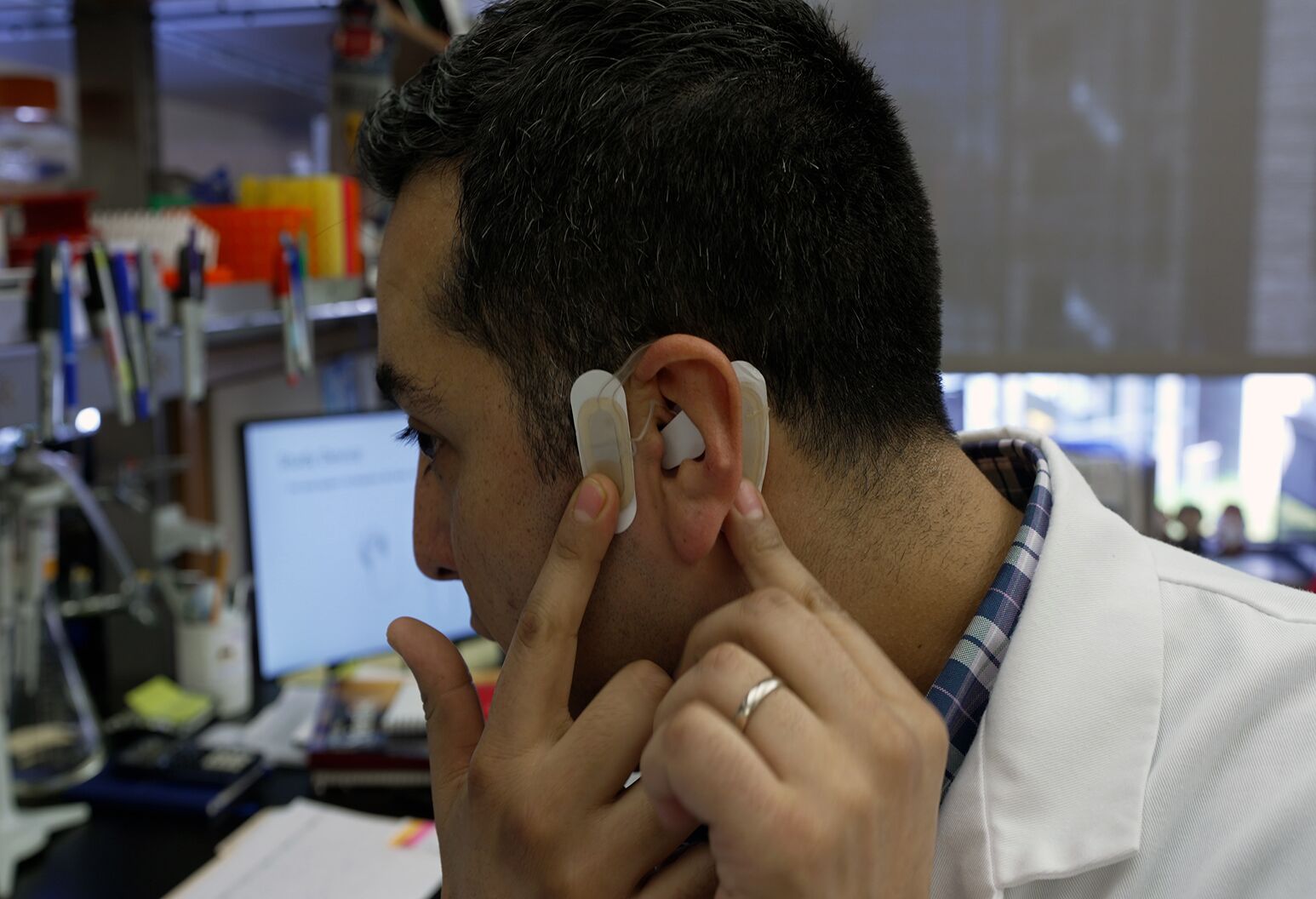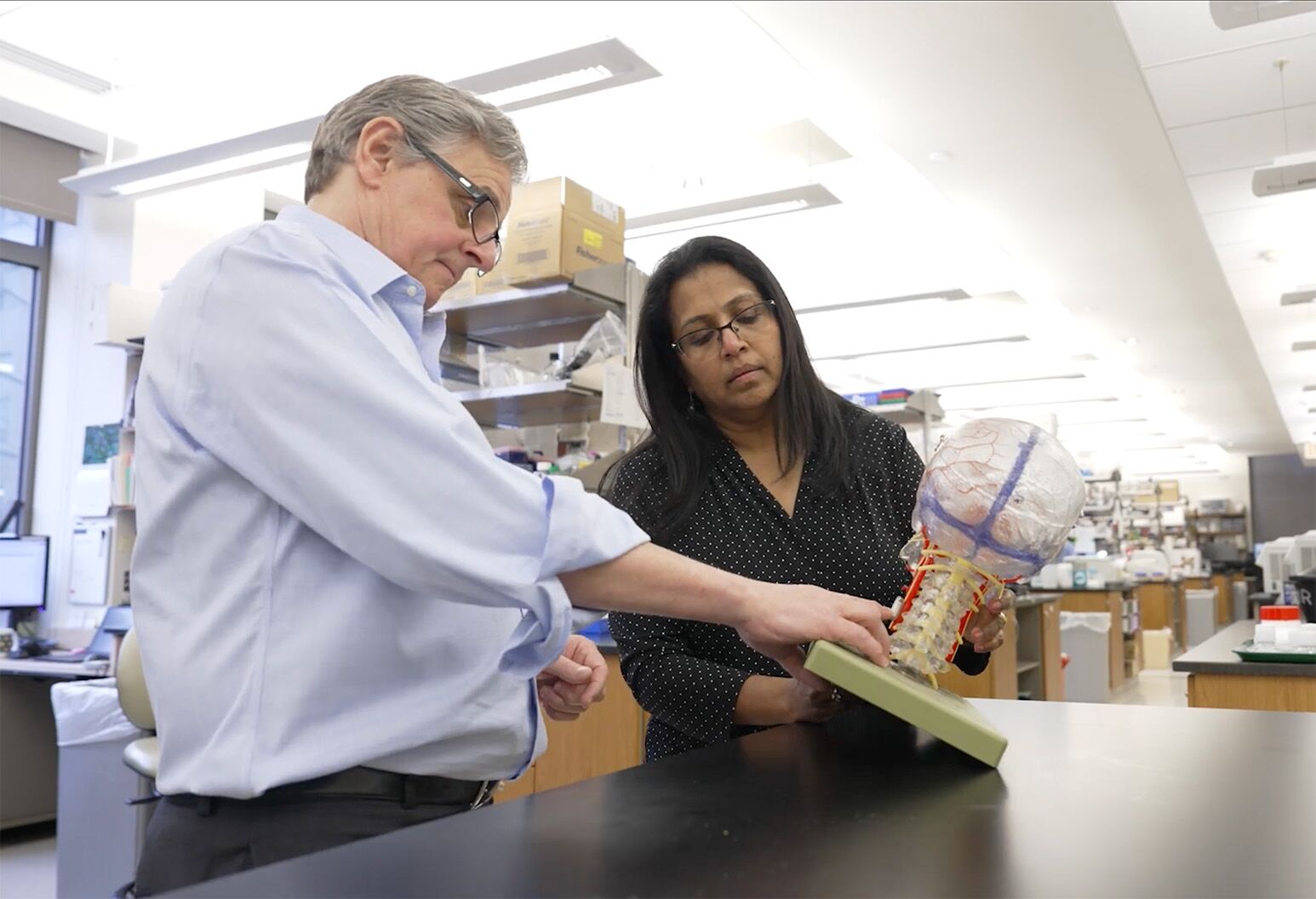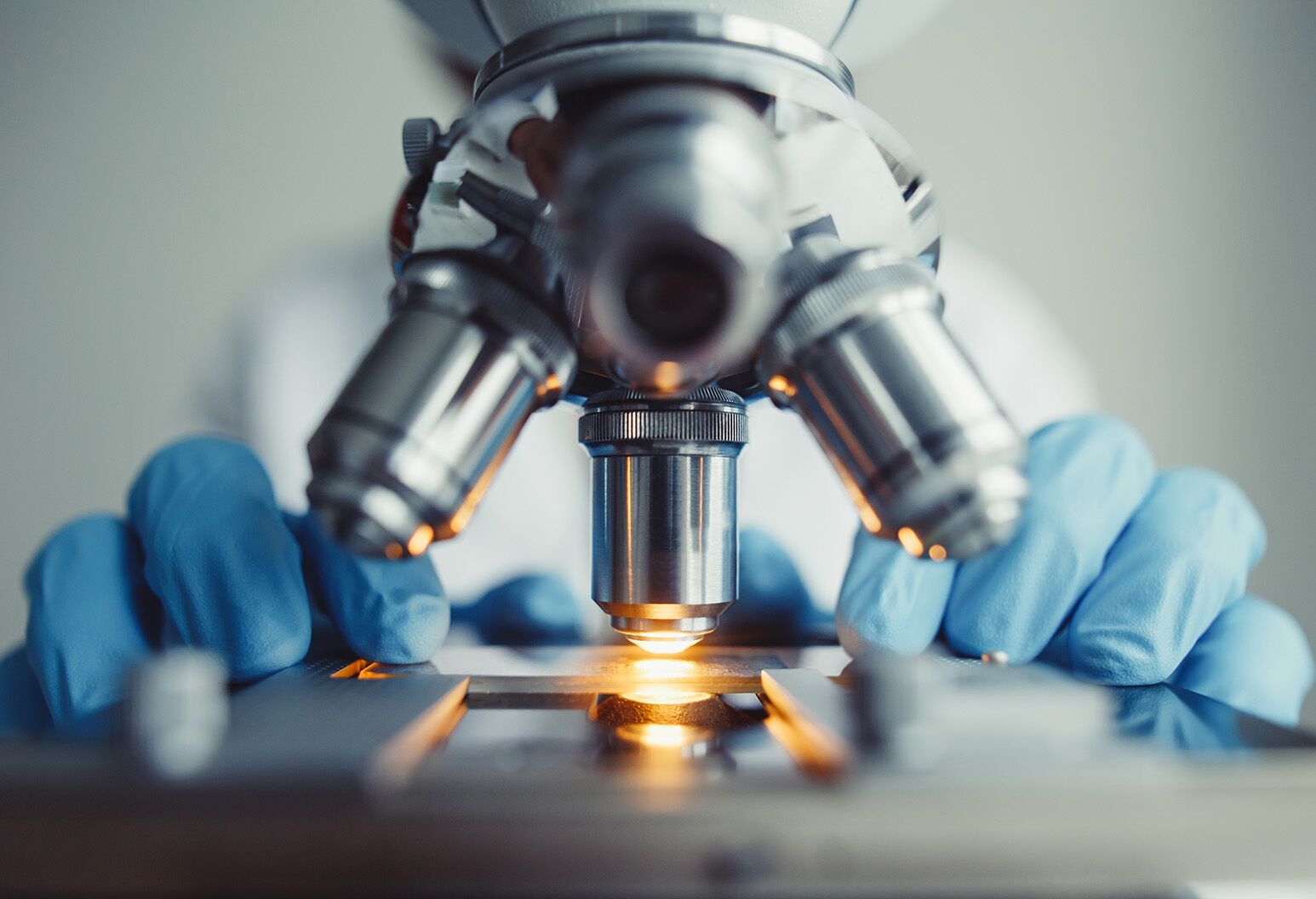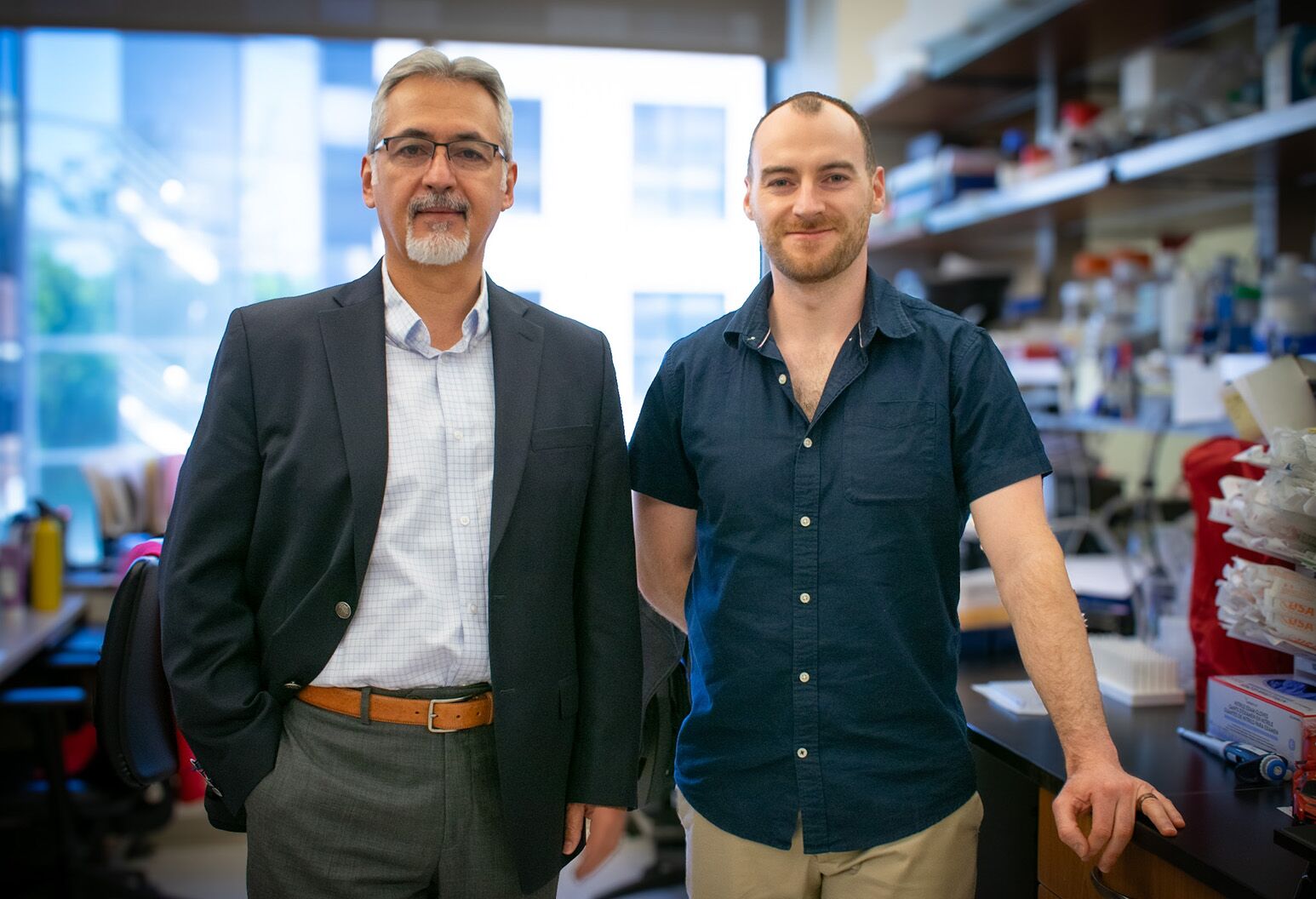Insights
The neural tourniquet: How nerve stimulation could stem bleeding, save lives
New approach using vagus nerve stimulation has been shown to reduce bleeding in lab tests by 75%
Tourniquets are one of the few medical devices that have been around for thousands of years that are still in use today.
What is a tourniquet?
A tourniquet is a band or strip of cloth used to prevent excessive blood loss by cutting off circulation to an injured body part. Simply wrapping a tourniquet tightly around an extremity, like an arm or leg, can prevent excessive blood loss and save lives.
Dating back to the Middle Ages, approaches to reduce extremity wound bleeding have remained essentially unchanged — until now.
Scientists at the Feinstein Institutes for Medical Research are testing what’s known as a neural tourniquet. The small electrical device is worn over the ear to stimulate crucial nerves inside the body to promote clotting and stop uncontrolled bleeding.
“We call this the neural tourniquet because instead of a mechanical device applied to the extremities of the body, we are harnessing the nervous system to stop uncontrolled bleeding,” says Jared M. Huston, MD, FACS, director of trauma research for the Department of Surgery at Northwell Health and associate professor in the Institute of Bioelectronic Medicine at the Feinstein Institutes for Medical Research.
“We are tapping into the body’s own systems to do the work, even when it comes to internal bleeding, where traditional tourniquets are simply not an option,” he says.
The device is from a subsidiary of Spark Biomedical called Five Liters, which derives its name from the total volume of blood in the human body. It looks to stimulate the vagus nerve, which is responsible for many of the body’s most critical functions, like heart rate, breathing and digestion. The vagus nerve is the target of these new therapies because of its role in protecting the body after tissue injury — in particular, blood clotting.
How the vagus nerve can help control bleeding
During episodes of acute trauma, the vagus nerve reins in the immune system after the body’s initial reaction to prevent infection. It does this by preventing beneficial local inflammation from developing into harmful, uncontrolled system inflammation. The sooner it reduces inflammation and gets things back to normal, the less likely you are to develop potentially lethal sepsis. But the vagus nerve must also protect against bleeding, because uncontrolled hemorrhage after trauma can cause death much faster than inflammation or sepsis.
That’s where vagus nerve stimulation — an emerging treatment that involves delivering electrical impulses to the vagus nerve to enhance its function — comes in.
“One of the more crucial roles of the vagus nerve in these circumstances is to send signals to the spleen to enhance platelets that help with clotting,” Dr. Huston says. “So, we are using vagus nerve stimulation to prime or augment that process proactively before bleeding begins.”
After release from the spleen, these platelets, which are tiny cells in the blood, circulate throughout the body looking for signs of injury. “If an injury is detected,” Dr. Huston says, “these primed platelets activate more readily to accelerate the clotting process.”
Certain conditions or medications compromise the body’s ability to form clots. They include:
- Hemophilia: a disorder that leads to excessive bleeding due to a lack of certain proteins in the blood called clotting factors.
- Liver disease: The liver produces many of the proteins needed for blood clotting. If someone has liver disease, their liver may not function properly, leading to a reduced ability to form clots.
- Vitamin deficiencies: Vitamins, especially vitamin K, are essential for producing proteins involved in clotting. If someone doesn’t get enough of these vitamins, it can impair their ability to clot properly.
- Medications: Certain medications, such as blood thinners, are prescribed to prevent clots in people at risk of heart attacks or strokes. While these medications are beneficial for many, they may increase the risk of bleeding by making it harder for the blood to clot.
For these populations, even minor cuts can turn into serious threats. Some treatments do exist. For example, hemophilia patients may receive infusions of clotting factors that they lack or other medications. But the side effects and high cost, among other factors, make them less than ideal.
“The neural tourniquet could offer a non-invasive approach to stop uncontrolled bleeding and limit unwanted side effects for patients,” says Lionel Blanc, PhD, professor in the Institute of Molecular Medicine at Feinstein Institutes for Medical Research, and principal investigator on the trial.
Studying new treatments for uncontrolled bleeding
That brings us back to the neural tourniquet. In the lab, Dr. Huston and team are activating it by applying vagus nerve stimulation to mice with hemophilia. After five minutes of treatment, scientists are able to reduce blood loss in the mice by a remarkable 75% — indicating that this approach may promote blood clotting.
“Even more importantly, we have found that after vagus nerve stimulation, platelets only respond to injured tissue, so they do not cause clotting anywhere else in the body like the heart or the brain,” Dr. Huston says. “We think this is a game changer and the potential implications for human use are profound.”
Scientists have also discovered that small branches of the vagus nerve extend close to the surface of the skin near the middle of the ear. By placing the stimulator there, doctors can stimulate the vagus nerve transcutaneously, or through the skin, without making an incision.
Other procedures make use of ultrasound wands, like those doctors use on expectant mothers to obtain images of fetuses in the womb. Studies at the Feinstein Institutes have shown that ultrasound wands near the spleen reduce overall inflammation in the body, and preclinical trials have shown that these wands reverse diabetes and reduce obesity in patients.
“By leveraging advanced neuromodulatory techniques like vagus nerve stimulation and non-invasive peripheral focused ultrasound, we are transforming treatments to improve health outcomes for patients with bleeding disorders,” says Carlos Bravo-Iñiguez, MD, PhD, physician scientist at the Feinstein Insitutes for Medical Research, and 2024 STAT Wunderkind.
Now, novel clinical trials are underway to see if vagus nerve stimulation changes the way platelets behave in healthy humans, and how that might impact the body’s reaction when experiencing heavy bleeding during trauma.
Using tourniquet technology from births to battlefields
Outside of performing surgery, there is no way to stop internal bleeding, which Dr. Huston explains can often be difficult to detect in the first place. “We believe the neural tourniquet could fill a critical void in patient care that’s been around for a long time,” he says.
Because the non-invasive versions of these nerve stimulators are small and mobile, they could potentially be used in several different situations to treat a wide variety of patients.
Victims of trauma: Uncontrolled bleeding from injuries, such as automobile accidents, assaults, and falls, are the leading cause of death in the US for those under the age of 44.
In 2022, they accounted for nearly three times as many deaths in this age group as stroke, heart disease and cancer combined.
While traditional tourniquets are effective on injuries to the extremities, like the arms, legs, feet and hands, neural tourniquets could be used to treat those with internal injuries from things like gunshots, car accidents, or falls.
Mothers giving birth: Postpartum hemorrhage is the leading cause of maternal deaths worldwide, accounting for approximately 20% of deaths in developing countries and 8% of deaths in developed countries, including the United States, which has one of the highest maternal mortality rates.
“We believe vagus nerve stimulation could be used before or during childbirth or caesarean sections to help control bleeding in these patients,” Dr. Huston says. “We could even envision women making use of them after they go home with their babies, when the risk of bleeding still exists.”
Troops in combat: On the battlefield, troops often sustain life-threatening internal injuries and delayed access to treatment. Vagus nerve stimulation devices could be used by medics after an injury occurs to stabilize soldiers in the field as well as after rescue and during surgery behind the front lines to address their wounds.
“Troops could also be treated prophylactically,” Dr. Huston says. “Soldiers preparing for deployment to the battlefield could receive vagus nerve stimulation beforehand to prime their platelets and prevent uncontrolled bleeding in the unfortunate event that they sustain an injury.”
He thinks that using the neural tourniquet before, during, and after conflict may help the blood clot more efficiently and the body recover more rapidly.
This technology could also be used to treat patients with hemophilia and even infants at risk of excessive bleeding due to inherited blood disorders.
Currently, researchers are testing healthy human volunteers to see what effect vagus nerve stimulation has on the volume and characteristics of platelets found in the bloodstream.
The next step would be to move their experiments into the clinical setting to see if it can stop or prevent bleeding in humans and, perhaps, usher in a revolutionary new era of tourniquet technology that has remained virtually unchanged for more than two thousand years.





